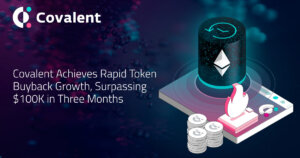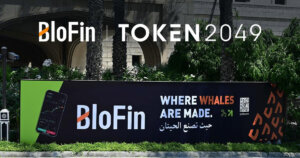 Stellar Joins Forces With IBM to Bring Carbon Credits to the Blockchain
Stellar Joins Forces With IBM to Bring Carbon Credits to the Blockchain Stellar Joins Forces With IBM to Bring Carbon Credits to the Blockchain

Photo by Matt Artz on Unsplash
A new partnership between IBM and carbon credits startup Veridium Labs Ltd will see carbon credits issued on the Stellar blockchain, streamlining the trade of carbon offset credits in an open market.
The most obvious application of distributed ledger technology may be as a method of storing and transferring monetary value, but the use cases of the blockchain extend far beyond cryptocurrency, allowing for the transfer and management of virtually any kind of value.
Veridium to Use IBM Blockchain Technology to Create Social and Environmental Impact Tokens. IBM’s engagement with Veridium will mark the first public IBM involvement in a token issuance on public network.#Consensus2018 #IBM #BlockchainWeekNYC https://t.co/LMjittKRcI
— Veridium Labs (@VeridiumLabs) May 15, 2018
Carbon credits are currently used to mitigate the growth in concentrations of greenhouse gases by allowing organizations to trade certificates or permits that represent the right to emit one tonne of carbon dioxide or other greenhouse gases.

More complex credits, however, don’t have a simple set value, which makes it difficult to assess their value, and virtually impossible to trade on open exchanges.
The new partnership between Veridium Labs and IBM, however, is set to transform the carbon credit market by using Stellar-based IBM blockchain technology, using blockchain technology to manage the process of carbon footprint accounting and offsetting.
Carbon Credits Tokens Issued on Stellar Blockchain
The partnership, announced in a press release on May 15th, aims to create a new type of fungible digital asset that uses a formula created by Veridium in order to establish the value of each carbon credit token. The Stellar blockchain will function as the ledger upon which tokens are stored and transacted, while IBM will manage trade activity.
Todd Lemons, the CEO & Co-Founder of Veridium, commented on the importance of streamlining the carbon credit tracking and trading process:
“For years, we’ve been trying to mitigate environmental impacts at every point in the value chain, however previous solutions still presented significant complexities and costs. Our work with IBM is the first step in dramatically simplifying the accounting and offsetting processes, and therefore ultimately helping reduce costs”
According to Lemons, environmental assets such as carbon credits are potentially under-utilized due to the complexity and difficulty associated with their use and trade. The new carbon credit token solution, states Lemons, delivers a range of benefits to both enterprise organizations and investors:
“Our digital environmental assets are designed to help companies and institutional investors purchase and use carbon credits to mitigate their environmental impacts today, and even hedge their potential carbon liabilities risks in the future.”
By tokenizing carbon credits, the Viridium solution created in tandem with IBM and Stellar allows organizations to purchased tokenized Triple Gold REDD+ credits, which are created by InfiniteEARTH using a carbon accounting methodology that is now embodied in the UN Paris Climate Agreement.
While the new carbon credit token may not offer market speculators the opportunity to cash in, it does represent a real-world application of blockchain technology that delivers demonstrable positive real-world environmental benefits. Bridget van Kralingen, the Senior Vice President, IBM Industry Platforms and Blockchain, emphasizes how blockchain technology can simultaneously improve efficiency and deliver societal benefits:
“By using a public, permissioned blockchain network, we can help Veridium create a new sustainable marketplace that is good for business and good for the world”


































































